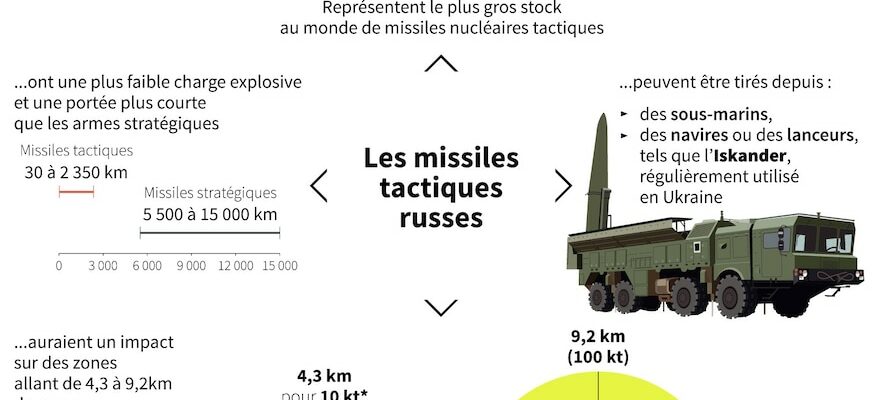“The third stage of the exercises of non-strategic nuclear forces has begun,” the Russian Defense Ministry said in a statement on Wednesday, July 31. The administration, headed by the newly appointed Andrei Belousov, is limiting the operation to the central and southern military districts of Russia. The latter includes the oblasts Ukrainians invaded by the Russian Federation, as well as the city of Rostov-on-Don, where the headquarters of the Russian operation in Ukraine is located.
These exercises were launched last May, in response to Western statements – notably that of Emmanuel Macron – which raised the possibility of sending troops on Ukrainian soil. “The goal is to maintain the personnel and equipment of non-strategic nuclear weapons combat units in order to unconditionally safeguard the territorial integrity and sovereignty of Russia,” the Russian Defense Ministry responded at the time. The third stage provides for training involving Iskander-M missile systems and aviation. The participating military personnel will, in particular, train to receive “special munitions” and equip missile systems and aircraft with them.
Since the beginning of the conflict in February 2022, Vladimir Putin has occasionally brandished the atomic threat. Last year, Russia installed tactical nuclear weapon launchers on the soil of its Belarusian ally. Russia’s repeated statements are part of the “declaratory strategy” according to Stéphane Audrand’s explanations. on X (ex-Twitter)historian and reserve officer. For him, this strategy of outlining the contours of his scope of action is all the more important because global stability depends on it. “The initial caution” adopted by the great powers on the question of deterrence is explained, according to the historian, by the nature of the conflict, which he defines as “an unknown with fragile analogies.”
The Russian arsenal
That said, even if Russia were to strike with the arsenal it is mobilizing during this series of exercises, there would still be no nuclear winter. Tactical weapons are smaller in scope than strategic ones, and their range of action is limited to the battlefield. Of the 6,000 nuclear warheads that Russia is said to have – a figure quoted by theFrench Institute of International Relations -, 2,000 would fall under the tactical classification. The power of these tactical weapons would still be greater than the bombs that hit Hiroshima and Nagasaki in August 1945, causing the deaths of 120,000 and 80,000 people respectively.
Russia’s tactical nuclear arsenal
© / afp.com/Valentin RAKOVSKY
Beyond numbers, the Russian threat lies in the way it rains nuclear fire. The army has Iskander ground-to-ground missiles and Kinjal air-to-ground missiles, carried on Russian Tu-22 or MiG-31K aircraft. Both the Iskander and the Kinjal can carry both nuclear and explosive charges, adding to the doubt about the nature of each shot. On the other side, France can count on M51 and ASMP-A missiles to deploy its nuclear power. As it does every year, it simulates the launch of a nuclear warhead by plane. The last simulation took place in November, from the Biscarrosse test center in the Landes.
